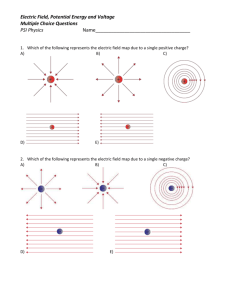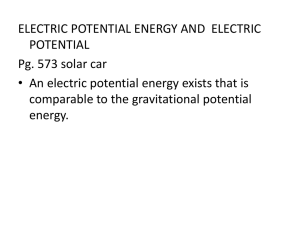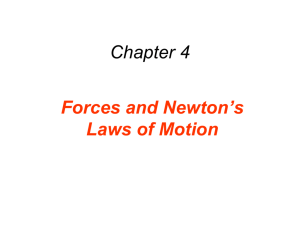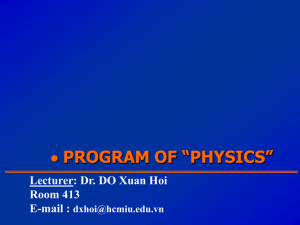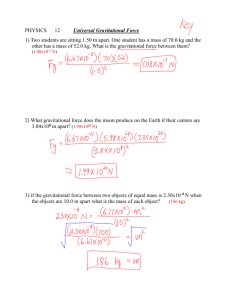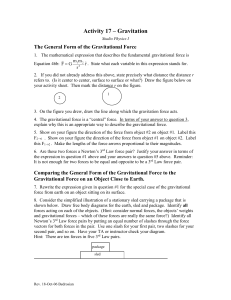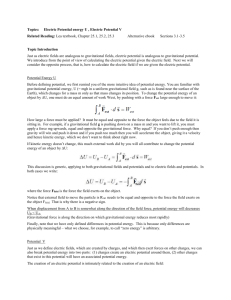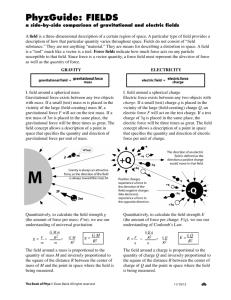electric force, field, potential, and energy
advertisement
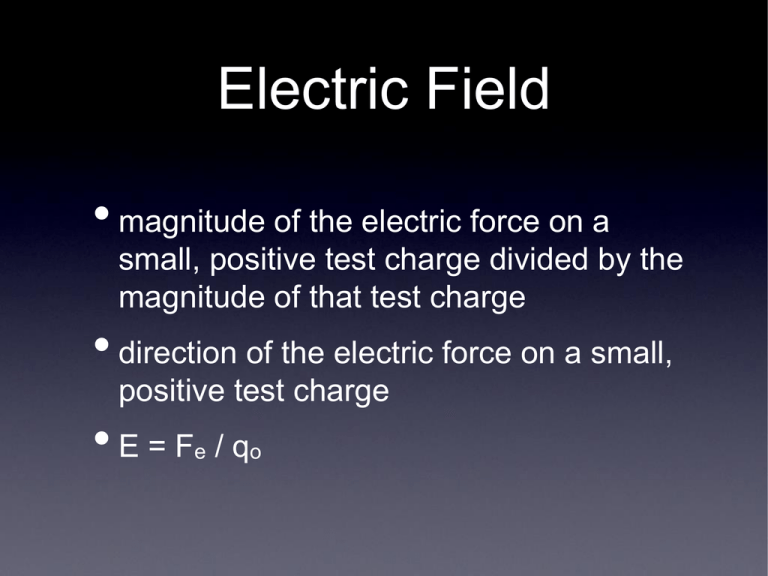
Electric Field • magnitude of the electric force on a small, positive test charge divided by the magnitude of that test charge • direction of the electric force on a small, positive test charge •E=F e / qo Electric and Gravitational Fields • magnitude of the electric force on a small, positive test charge divided by the magnitude of that test charge • direction of the electric force on a small, positive test charge • E=F /q • magnitude of the gravitational force on an object divided electric 0 by the mass of that object • direction of the gravitational force on the object • g=F /m g 0 Electrical Potential Energy • potential energy associated with a charge due to its position in an electric field • PE electric = Felectric d = q E d (for uniform field) • PE electric: electrical potential energy (J); q: charge (C); E: electric field (N/C); d: displacement in direction of field (m) Electrical and Gravitational Potential Energy • potential energy associated with a charge due to its position in an electric field • PE e = Fe d = q E d • potential energy associated with an object due to its position in a gravitational field • PE g = Fg h = m g h • • • • Electrical and Gravitational Potential Energy as positive charge moves towards the positive end of the field, work is done on the field and the charge gains potential energy as positive charge moves away from the positive end of the field, work is done by the field and the charge loses potential energy as object moves up, work is done on the field and the object gains potential energy as object falls, work is done by the field and the object loses potential energy Electric Potential • the work that must be performed against electric forces to move a charge from a reference point to the point in question, divided by the charge • V = PE / q = E d (for uniform field) • V: potential difference (V); PE : electrical electric electric potential energy (J); q: charge (C) • volt (V) = 1 J/C Electric and Gravitational Potential • the work that must be performed against electric forces to move a charge from a reference point to the point in question, divided by the charge • V = PE electric /q=Ed • the work that must be performed against gravitational forces to move an object from a reference point to the point in question, divided by the mass of the object • gravitational potential = PE g /m=gh Potential Difference (Voltage) • the work that must be performed against electric forces to move a charge between the two points in question, divided by the charge • ΔV = ΔPE electric / q = E d (for uniform field) Electric and Gravitational Potential Difference • the work that must be performed against electric forces to move a charge between the two points in question, divided by the charge • ΔV = ΔPE electric /q = E d • the work that must be performed against gravitational forces to move an object between the two points in question, divided by the mass of the object • gravitational potential difference = ΔPEg / m = g Δh Equipotential Plots Electron Volt • energy acquired by a particle carrying a charge equal to that on the electron as a result of moving through a potential difference of 1 Volt • ΔPE = q V = (1.6 x 10 C) (1 V) • 1.6 x 10 J = 1 eV • not a proper SI unit; still use Joules in -19 -19 equations Electric Potential of a Point Charge •E=kQ/r •V=ΣEd • (integral calculus magic) • V = k Q / r (where potential is 0 at ∞) 2 Electric Potential • is a scalar • much easier to determine electric potential due to multiple charges • need to keep track of sign

